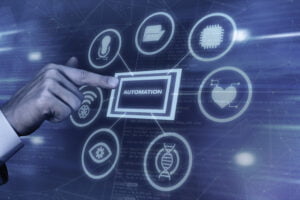The Industrial Internet of Things (IIoT) revolutionizes traditional industrial processes by integrating interconnected devices, sensors, and software systems. In this digital era, real-time monitoring and testing play pivotal roles in ensuring the seamless operation of industrial environments. This article delves into the significance of real-time monitoring and testing in IIoT settings, exploring their impact on operational efficiency and overall productivity.
Real-time Monitoring in Industrial IoT Environments:
Real-time monitoring stands as a cornerstone of Industrial IoT (IIoT) environments, enabling the continuous tracking and analysis of data generated by interconnected devices and sensors. Within these environments, sensors serve as the primary data sources, collecting diverse streams of information regarding temperature, pressure, humidity, vibration, and more. This data is then transmitted to centralized systems for analysis and visualization in real time.
The essence of real-time monitoring lies in its ability to provide instant insights into the state of industrial processes. By leveraging advanced analytics and visualization techniques, operators can gain a comprehensive understanding of equipment performance, identify anomalies, and detect potential issues before they escalate into critical failures.
Moreover, real-time monitoring facilitates predictive maintenance strategies, allowing organizations to anticipate maintenance needs based on data-driven insights rather than reactive responses. This proactive approach minimizes downtime, reduces maintenance costs, and enhances overall operational efficiency.
Testing in Industrial IoT Environments:
Testing is an indispensable component of ensuring the reliability, security, and performance of Industrial IoT (IIoT) systems. In the context of IoT environments, testing encompasses a range of activities aimed at validating the functionality, interoperability, and resilience of interconnected devices, networks, and applications.
Importance of Testing:
- Testing serves as a proactive measure to identify and mitigate potential vulnerabilities and defects within IIoT systems before they impact operations.
- It ensures compliance with industry standards, regulations, and safety requirements, safeguarding against potential risks and liabilities.
- By simulating real-world scenarios and stress conditions, testing enables organizations to assess the scalability and resilience of IoT deployments.
Types of Testing:
- Functional Testing: Verifies the core functionality of IoT devices and applications, ensuring that they perform as intended under various operating conditions.
- Performance Testing: Evaluates the responsiveness, throughput, and scalability of IIoT systems, identifying potential bottlenecks and optimizing resource utilization.
- Security Testing: Assess the robustness of IIoT security measures, including authentication, encryption, access control, and data integrity, against potential cyber threats and attacks.
Challenges and Solutions:
- Heterogeneity: The diverse nature of IIoT devices and protocols poses challenges for testing interoperability and compatibility. Solutions involve adopting standardized testing frameworks and emulation techniques.
- Data Privacy and Compliance: Testing in IIoT environments must adhere to strict data privacy regulations and compliance standards. Solutions include implementing anonymization techniques and utilizing secure testing environments.
Ensuring Operational Efficiency:
Achieving and maintaining operational efficiency is paramount in industrial environments, and the integration of real-time monitoring and testing within Industrial IoT (IIoT) ecosystems is instrumental in this pursuit.
Benefits of Real-time Monitoring and Testing:
- Timely Decision-Making: Real-time monitoring provides instant insights into industrial processes, enabling operators to make informed decisions promptly.
- Proactive Maintenance: By identifying anomalies and predicting potential failures in advance, real-time monitoring facilitates proactive maintenance strategies, minimizing downtime and optimizing equipment lifespan.
- Continuous Improvement: Testing ensures the reliability and performance of IIoT systems, allowing organizations to iterate and optimize processes continuously.
Conclusion:
In the dynamic landscape of industrial operations, the synergy between real-time monitoring and testing emerges as a linchpin for ensuring operational efficiency within Industrial IoT (IIoT) environments. By harnessing the power of real-time insights and proactive testing strategies, organizations can optimize processes, minimize downtime, and mitigate risks effectively.
The benefits of real-time monitoring and testing extend beyond mere optimization; they pave the way for innovation and resilience in industrial operations. Through predictive maintenance, timely decision-making, and robust security measures, IIoT ecosystems can adapt to evolving challenges and opportunities, driving sustainable growth and competitive advantage.
As industries continue to embrace digital transformation, the integration of real-time monitoring and testing will remain indispensable for unlocking the full potential of Industrial IoT. By prioritizing operational efficiency and leveraging data-driven insights, organizations can navigate complexities, drive efficiencies, and thrive in an increasingly interconnected world.












